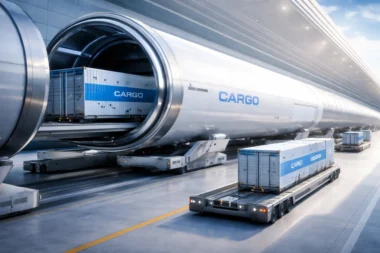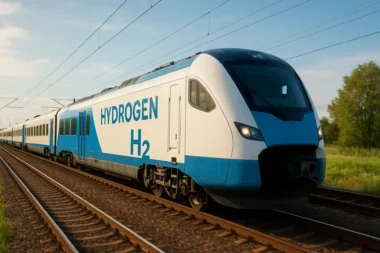The study of aerodynamic impact on bicycles represents a pivotal intersection of engineering, physics, and sports science. As cycling gains increasing popularity not only for recreation but also as a competitive sport, understanding the intricate relationship between aerodynamics and bicycle design becomes paramount. This article delves into a comprehensive research-based exploration of how aerodynamics profoundly influences the performance of bicycles, shedding light on the methodologies, findings, and implications for cyclists, manufacturers, and sports enthusiasts.
Methodologies in Aerodynamic Research:
Conducting thorough aerodynamic studies on bicycles involves advanced methodologies such as wind tunnel testing, computational fluid dynamics (CFD), and field testing. Wind tunnel experiments provide controlled conditions to measure drag forces and airflow patterns, while CFD simulations offer a virtual environment for detailed analysis. Field testing, often conducted with sensors and specialized equipment on actual cycling tracks, captures real-world aerodynamic interactions.
Impact of Rider Position and Posture:
One key focus of aerodynamic research is the effect of rider position and posture on drag forces. Studies analyze how a cyclist’s body orientation, head position, and arm placement influence aerodynamic resistance. Findings indicate that optimizing the rider’s posture can significantly reduce drag, leading to enhanced speed and efficiency.
Aerodynamic Components and Bicycle Design:
Researchers investigate the impact of specific components on bicycle aerodynamics, including frame shapes, wheels, handlebars, and even clothing. Advanced materials, aerodynamically optimized shapes, and innovative design features aim to minimize resistance. The integration of teardrop-shaped tubes, deep-rim wheels, and streamlined handlebars are among the innovations explored to enhance overall bicycle performance.
Wind Tunnel Insights:
Wind tunnel studies provide invaluable insights into the aerodynamic properties of bicycles. Researchers analyze the aerodynamic drag coefficient, turbulence patterns, and pressure distribution on different bicycle configurations. These findings contribute to the development of more aerodynamically efficient bicycle designs, influencing both competitive racing bikes and recreational models.
Real-world Applications and Racing Performance:
Translating aerodynamic research into real-world racing scenarios is a critical aspect. Studies explore how aerodynamic improvements impact racing performance, including speed gains, energy conservation, and the overall efficiency of cyclists during competitions. The integration of aerodynamic principles in professional cycling has become a game-changer, influencing training regimens and equipment choices.
Cyclist-Specific Considerations:
Aerodynamic studies also consider individual variations among cyclists, acknowledging that different body shapes and sizes can impact aerodynamic efficiency. Tailoring bicycle designs and recommendations based on individual rider characteristics ensures a more personalized and effective approach to enhancing aerodynamic performance.
Innovations in Bicycle Technology:
The research on aerodynamics has spurred technological innovations in the cycling industry. From the development of aerodynamic frames and helmets to the integration of disc brakes and electronic shifting systems, manufacturers continually strive to push the boundaries of aerodynamic efficiency in bicycle design.
Challenges and Future Directions:
Despite advancements, challenges persist in achieving optimal aerodynamics without compromising other essential factors such as comfort and handling. Future research aims to strike a balance between aerodynamic gains and the practical considerations of everyday cyclists, paving the way for more inclusive and accessible advancements in bicycle technology.
Practical Applications for Cyclists:
The culmination of aerodynamic research has practical implications for cyclists of all levels. From casual riders seeking efficiency in daily commutes to competitive cyclists aiming for podium finishes, understanding and applying aerodynamic principles can lead to improved speed, reduced fatigue, and an overall enhanced cycling experience.
Recent years have witnessed a surge in innovative technologies and hardware designed to optimize airflow dynamics and enhance overall performance.
Advanced Computational Fluid Dynamics (CFD):
The latest breakthroughs in CFD have ushered in a new era of precision in aerodynamic research. High-performance computing allows for intricate simulations, providing detailed insights into the airflow around different bicycle components and rider positions. This technology enables researchers to analyze complex aerodynamic interactions with unparalleled accuracy, guiding the development of more efficient bicycle designs.
3D Printing for Customized Aerodynamics:
3D printing technology has transformed the manufacturing process, allowing for the creation of highly customized and aerodynamically optimized components. From personalized handlebars to unique frame shapes, cyclists can now benefit from equipment tailored to their individual body positions and riding styles, maximizing aerodynamic efficiency.
Wind Tunnel Innovations:
Recent advancements in wind tunnel technology have enhanced the precision and reliability of aerodynamic testing. Cutting-edge wind tunnel facilities equipped with state-of-the-art sensors and measurement tools enable researchers to gather real-time data on drag coefficients, turbulence patterns, and pressure distributions. This level of accuracy contributes to the fine-tuning of bicycle designs for optimal aerodynamic performance.
Smart Materials and Adaptive Surfaces:
The integration of smart materials and adaptive surfaces on bicycle components represents a leap forward in aerodynamic innovation. Surfaces that can dynamically adjust their texture or shape in response to changing conditions offer the potential to further reduce drag. From self-adjusting aero helmets to adaptive wheel rims, these technologies aim to maximize efficiency across various cycling scenarios.
Augmented Reality (AR) for Rider Position Optimization:
Augmented Reality has found its application in optimizing rider positions for enhanced aerodynamics. AR systems overlay real-time aerodynamic data onto a cyclist’s field of view, allowing for on-the-fly adjustments to posture and positioning. This technology empowers cyclists to find the most aerodynamically efficient riding stance for their unique physiology and environmental conditions.
Carbon Nanotube Reinforcements:
Carbon nanotubes, renowned for their strength-to-weight ratio, are finding application in bicycle components to enhance aerodynamics. Reinforcing key structural elements with carbon nanotubes reduces weight while maintaining strength, contributing to overall aerodynamic efficiency. From frames to wheels, this technology is revolutionizing the materials used in high-performance bicycles.
Integrated Sensor Systems:
Bicycles equipped with integrated sensor systems are becoming standard in aerodynamic research. These systems provide real-time data on a cyclist’s speed, power output, and environmental conditions. This information, when coupled with advanced analytics, allows for a more comprehensive understanding of how aerodynamics interact with the dynamic variables of cycling.
Machine Learning Optimization Algorithms:
Machine learning algorithms are increasingly being employed to optimize aerodynamic designs. These algorithms analyze vast datasets from wind tunnel tests, CFD simulations, and real-world cycling scenarios to identify patterns and refine designs. The iterative process facilitated by machine learning leads to continuous improvements in aerodynamic efficiency.
In conclusion, the exploration of aerodynamic impact on bicycles signifies a convergence of engineering, physics, and sports science, crucial for both recreational and competitive cycling. The methodologies discussed, encompassing wind tunnel testing, CFD simulations, and real-world field testing, provide a comprehensive understanding of how aerodynamics shapes bicycle performance. From scrutinizing rider positions and the impact of components on drag forces to translating research into real-world racing scenarios, advancements in technology and hardware have played a transformative role. The integration of cutting-edge technologies such as advanced CFD, 3D printing, wind tunnel innovations, smart materials, augmented reality, carbon nanotube reinforcements, integrated sensor systems, and machine learning optimization algorithms represents a leap forward. These innovations not only refine aerodynamic efficiency but also redefine the landscape of bicycle technology. As we navigate future challenges and strive for inclusivity, the practical applications of this research promise an enhanced cycling experience for riders of all levels. The recent surge in technology, from precision CFD simulations to smart materials and adaptive surfaces, illustrates a promising trajectory for the continued evolution of aerodynamics in the world of cycling.



